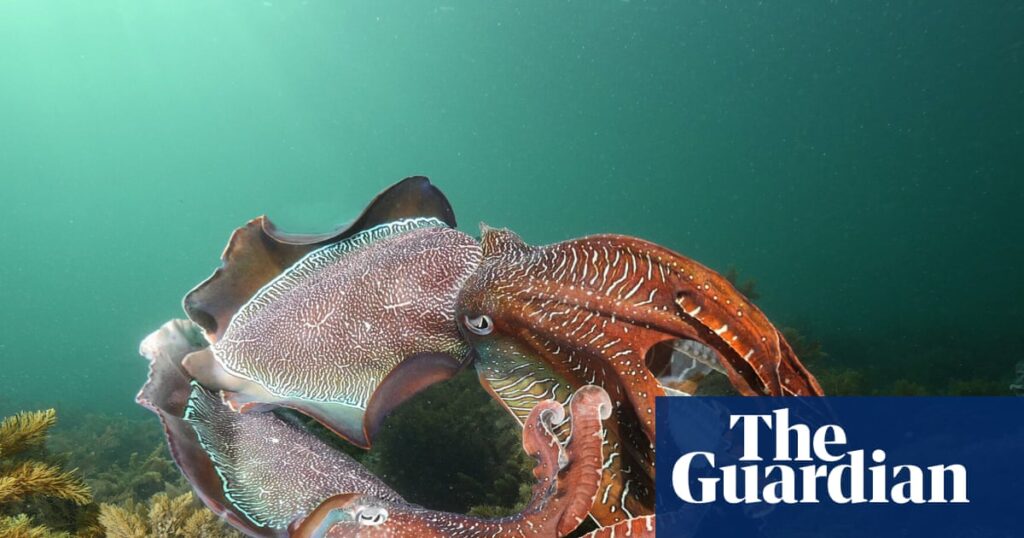As thousands of giant cuttlefish gather in South Australia’s Spencer Gulf, scientists are investigating emergency actions amid fears the state’s toxic algal bloom could be catastrophic for the globally unique natural phenomenon.
The spectacular annual cephalopod meet-up takes place in a kaleidoscope of colour off the coast of Whyalla from late May to August, attracting thousands of tourists from Australia and overseas.
But this year scientists have sounded the alarm as the event – known to locals as Cuttlefest – coincides with the spread of deadly algae into the Spencer Gulf.
Dr Zoe Doubleday, a marine ecologist at the University of South Australia, said the phenomenon was unique in that “it’s the only population of giant Australian cuttlefish – and only population of cuttlefish worldwide – that comes together and breeds in their tens of thousands and forms this spectacular natural wonder”.
Doubleday said the short lives of the cuttlefish, and lack of generational overlap, made the Spencer Gulf population particularly vulnerable to the harmful bloom of Karenia mikimotoi algae, which has devastated marine life along the state’s coastline since March.
Sign up: AU Breaking News email
In an emergency meeting convened by the state government on Wednesday, scientists and marine managers agreed to investigate safeguards in the event of the bloom being detected in waters off Point Lowly, where the cuttlefish gather annually. Options included looking at the feasibility of collecting an insurance population of cuttlefish eggs, something that had never been tried before.
“If it did reach the breeding aggregation, there’s a good chance it could just wipe all the eggs out,” Doubleday said.
“When mum and dad die, you’ve just got the offspring left. If all the eggs are wiped out in the bloom – and we’ve seen how lethal this bloom can be – then there’s no generation … left to replenish or repopulate the population.”
Stefan Andrews, marine scientist at the Great Southern Reef Foundation, said if that occurred it would be “catastrophic”.
Thousands of giant cuttlefish, some measuring up to 50cm, had already arrived “right on cue” to mate and lay eggs at the national heritage-listed Cuttlefish Coast Sanctuary Zone – about 63km south of Port Augusta and 15km north-east of Whyalla – according to Andrews, who has spent hundreds of hours underwater observing the cuttlefish breeding events over the last 15 years.
“You can have tens of thousands of cuttlefish all within a pretty small area,” he said. There’s some really fantastic egg-laying habitat there. It’s this rocky reef that’s got all the seaweeds over it. And they lay the eggs on the underside of what they call dens – little caves or rocky outcrops.”
While scientists are holding out hope that cold water temperatures and high salinity in the upper Spencer Gulf would act as a buffer against the worst of the bloom, the state government is monitoring the situation closely and developing contingency plans.
South Australia’s environment minister, Dr Susan Close, said “while early indications have not shown impacts of the algal bloom on the cuttlefish population, the government will continue to monitor satellite imagery and survey the cuttlefish coast”.

